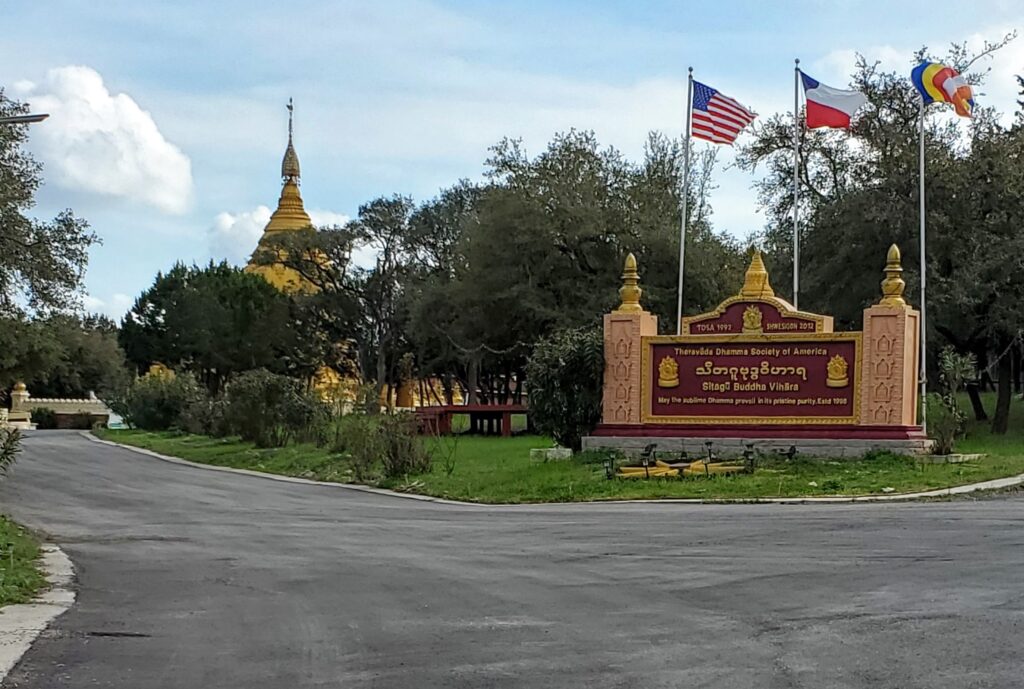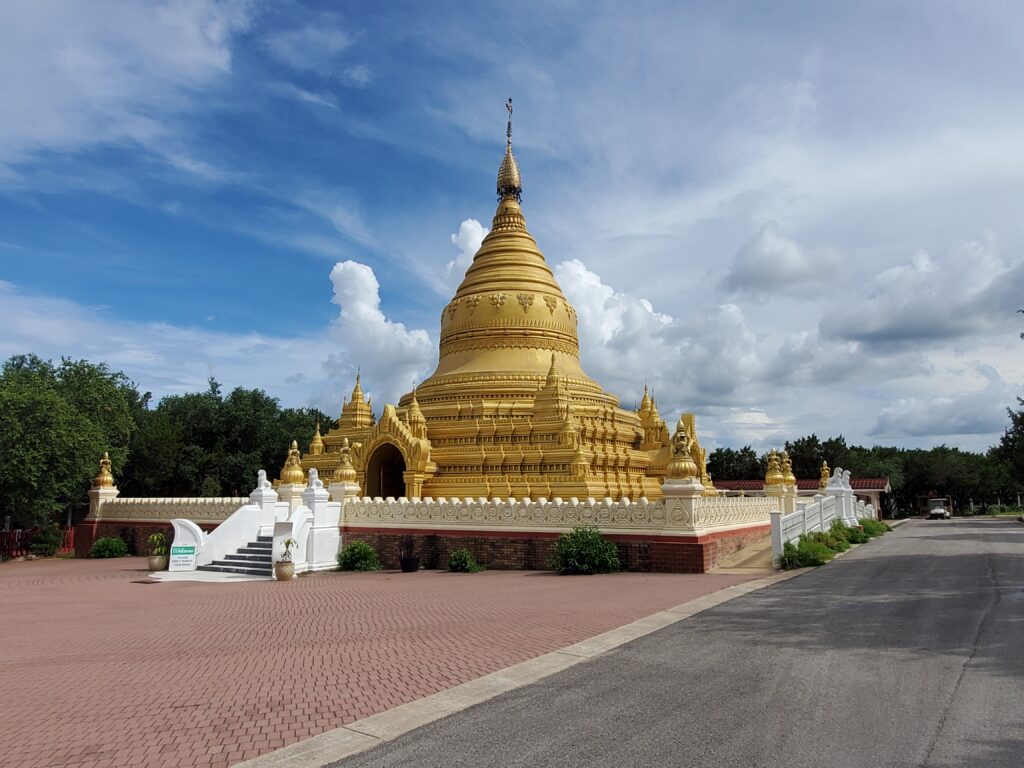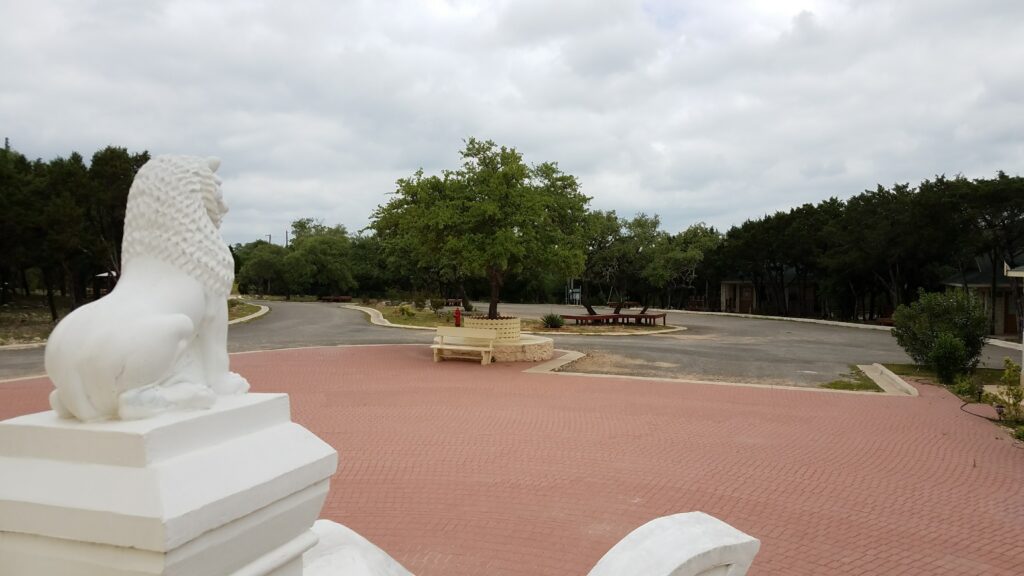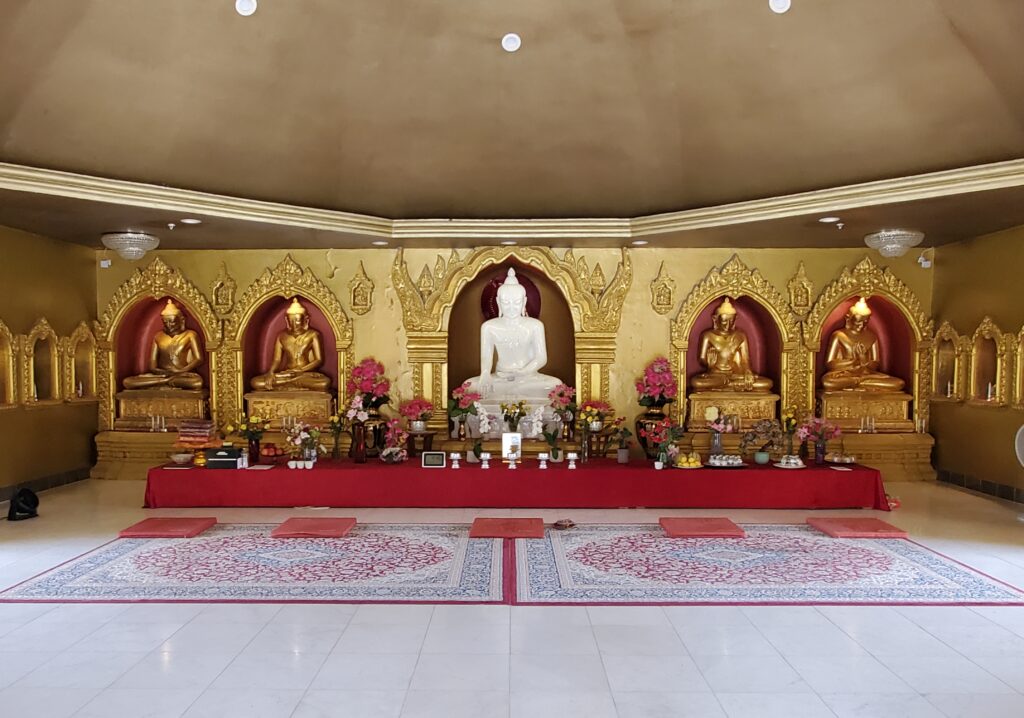By Brandon Ba
Burmese immigration to the U.S. has been categorized into several waves, which align with events like the anti-Chinese riots in 1967 and the military suppression against the pro-democracy movement in the 1980s (Cheah 2004, 127-128). The first wave largely consisted of ethnic Chinese, while the latter wave consisted of various Burmese ethnic groups like the Karens, Burmans, Chin, and Kachin. As a result, these individuals—many of whom are Buddhist—brought their cultural and religious practices with them, contributing to the establishment of Burmese Buddhist monasteries in the U.S. like the Sitagū Buddha Vihāra (Cheah 2004, 166-170).
Established in 1996 in rural Austin, Texas, by Venerable Ashin Nyanissara (“Sitagū Sayadaw”), the Sitagū Buddha Vihāra is a place for practice of Theravāda Buddhism and Dhamma study (Sitagū Buddhist Vihāra 2011). It is also home to many community and cultural events, such as the Kathina festival and the Burmese Water Festival. These help maintain the ethnic identity and practices of Burmese immigrant Buddhists (Cheah 2004, 138). Though the nearby Burmese community is the main supporter, the abbot Ashin Ariyadhamma discussed the diversity of those involved with the temple, from the donors to the ordained sangha. He mentioned the involvement of American and Vietnamese monastics, and American, Thai, Nepalese, Sri Lankan, and Jain laypeople as supporters or visitors to the Sitagū Buddha Vihāra (Ashin Ariyadhamma 2021).
Since its founding, the Sitagū Buddha Vihāra has built many facilities on its 16 acres of land, including the Sitagū Shwe Si Khom Pagoda,[1] the Dhamma Hall, library, and housing for lay people and the sangha. It is a part of a larger organization known as the Sitagū Association, which was established in 1980 in Myanmar to support Buddhist education and social welfare. Two other U.S. monasteries—Sitagū Dhamma Vihāra and Sitagū Sangha Vihāra, located in Minnesota and Florida respectively—are also part of this organization.
Even though it is not a clinic or formal healthcare provider, the Sitagū Buddha Vihāra is tied to health through common Buddhist practices, such as merit-making and chanting (Salguero 2019). For example, at the Burmese New Year Festival, the monks chant eleven paritta texts (protective incantations) to protect against danger and promote health. Likewise, the Bojjhaṅgā Sutta is recited to help members recover from illness, which is a common Buddhist practice with scriptural precedence (Anālayo 2017, 12-19). Individuals can also engage in Buddhist practices like the eight precepts, meditation (Salguero 2019), and morality (śīla), which offer guidance on the right actions and are often interpreted by community members as leading to better health.
Community interactions are another form of disseminating healthcare information, as both the supporting laypeople and ordained sangha seek medical advice from licensed physicians who are temple members, especially for information regarding certain treatments or medications (Salguero 2019). These interactions still continue through the COVID-19 pandemic, as the Sitagū Buddha Vihāra has held Zoom meetings where physicians shared instruction on how to prepare for the COVID-19 pandemic and vaccinations. Additionally, the Sitagū Buddha Vihāra itself has modified certain practices to accommodate for the COVID-19 pandemic, by providing personal protective equipment (PPE) within the temple, following social distancing guidelines, and stopping direct hand-to-hand food offerings.
Media

Street entrance to the Sitagū Buddha Vihāra. 
Image of the Sitagū Shwe Si Khom Pagoda. 
View of the forest from the pagoda. 
Main altar inside the pagoda.
Google Street View
Scholarly Sources
- Anālayo. 2017. “The Healing Potential of the Awakening Factors in Early Buddhist Discourse.” In Buddhism and Medicine: An Anthology of Premodern Sources, edited by Pierce Salguero, 12-19. New York: Columbia University Press.
- Ashin Ariyadhamma. 2021. (abbot), interview with the author. June 4, 2021.
External Links
- “Sitagu Buddha Vihara” Sitagu Buddhist Vihara – Theravada Dhamma Society of America. http://sitagu.org/austin/index.html
- Cheah, Joseph. 2004. “Negotiating Race and Religion in American Buddhism: Burmese Buddhism in California.” Ph.D., Ann Arbor: Graduate Theological Union. 305189345. ProQuest Dissertations & Theses Global. https://www.proquest.com/openview/625248d4cd0b810aeacad56d1ab8560f/1?pq-origsite=gscholar&cbl=18750&diss=y.
- Salguero, C. Pierce. 2019, “Varieties of Buddhist Healing in Multiethnic Philadelphia.” Religions 10, no. 1: 48. https://doi.org/10.3390/rel10010048. [Open Access]
- Sitagū Buddhist Vihāra. 2011. “About Sitagū Buddha Vihāra.” September 2011. http://sitagu.org/austin/About/about.html.
Notes
[1] The Shwe Si Khom Pagoda is modeled after the Shwezigon Pagoda in Myanmar and is about three times smaller. Shwezigon Pagoda means golden pagoda on a dune, referring to the legend that the site was chosen based on where a white elephant carrying a Buddhist relic had stopped to rest.
